Traditional handicrafts are being developed in trade villages. These villages have cultural value while increasing earnings for rural dwellers. VietNamNet took a look at local activities.
Rural Vietnam is home to 90% of the nation’s population. Typically, growth and economic development in rural areas is lower than in urban centres. Trade villages include shops and factories that produce handicrafts.
A trade village in a rural area or on the edge of town plays an important role in three aspects: it develops countryside economics, heightens rural industrialisation, and preserves cultural value. It provides positive factors and healthy activities in both manufacturing and daily life.
Every trade village has a handicraft guild in the community. They also retain culture through custom and usage, religion, and manner; besides the common character of national culture, each village also has its own.
Hanoi is surrounded by trade villages, and many of their products are sold far and wide. Some ancient streets such as Hang Dao, Hang Bac, Hang Chieu all started as trade villages. Better known villages have products named after them, such as Ha Dong silk, Bat Trang ceramics, Dong Ho landscape portraits, and Yen So bamboo.
Vietnamese Silk – a national treasure
A Vietnamese princess gave her people a great job nearly 3000 years ago, one that both supports their living and become a cornerstone of Vietnamese culture.
The traditional skill
Van Phuc is situated on the bank of Nhue River, 10km from Hanoi on the southwest motorway. The village is in the centre of Ha Dong Town, Ha Tay Province, and the biggest silk production village in Vietnam. The sound of looms has filled Van Phuc for a thousand years, and is a touching sound to villagers when returning from far away.
The main road is surrounded by greenery and ponds, and colourful bolts of silk drying on the road. In fact, the village’s fine silk, commonly known as Ha Dong Silk, has inspired many poets and composers to write about its beauty.
The village is busy with activity and one can hear the sound of the newer power-looms in every home. The days of working strenuously with traditional, manual looms are gone, and the village's weavers each operate three large power-looms with a small electric motor.
Design of Ha Dong silk patterns has been computerized, which allows designers to reduce working time from 20 days to a just three days per pattern.
Following stories of Van Phuc artisans, the first Vietnamese silk maker was Princess Hoang Phu Thieu Hoa, also known as Mo Nham. Daughter of King Hung Dinh Vuong - King of the first Dynasty of Vietnam - she lived over 3000 years ago.
Thieu Hoa liked weaving, and she often travelled outside the palace to teach people to farm silkworms and the fine art of weaving. When Thieu Hoa reached the age to marry, her father wanted to marry her to a teacher. Thieu Hoa asked the King to delay the wedding and moved to Co Sat village to live, and there she taught people to weave while she worked as a farmer.
As a 32-year-old, she travelled the country to teach the arts of silk in more than 60 villages. She then returned to Co Sat, where she lived out her days.
The national culture
Millennia later, silk is now not just a way of earning a buck, it has become a cornerstone of Vietnamese culture.
In the past, middle-aged men usually wore traditional the costumes, which were dyed in dark colours, when going out or receiving guests. The is a kind of silk, loosely woven to be light and breathable. For the fussier gent, the with vignettes of brick-walls or water-ferns were worn on special days and to festivals.
Often, a sa, xuyen or bang covered the the. Sa is very thin silk woven from glossy thread, which shimmers in the daylight. Xuyen is similar but sparser, and for each silk row woven, one is missed. Bang looks like cobweb. Sa, xuyen and bang were worn to highlight the undergarment.
On cold days, people wear nhieu, which is made by spinning several silk rows into thick heavy cloth, making the nhieu warm. Nhieu are lined by ky cau, a flower silk. Nai and dui, made with unpolished silk, were sturdy for labouring countryside women.
Linh were woven with lengthy threads that are thicker across than standard, making its surface look shiny. Women would wear linh for Tet and festivals. Doan was made like linh but thicker, and doan were mostly made for men.
For a period of time, Vietnamese silk production was abandoned; people liked newer textiles, which did not demand careful care like silk. But in recent years, Vietnamese designers have brought silk back to their gentle and glossy ao dai collections.
Now, when walking the streets of Hanoi, particularly Hang Ngang, Hang Dao and Hang Gai, there is a resurgence of silk. Many different products, including as clothes, embroidered pictures, handbags and lanterns are on offer there.
The national property The village is surrounded by colourful bolts of silk drying.
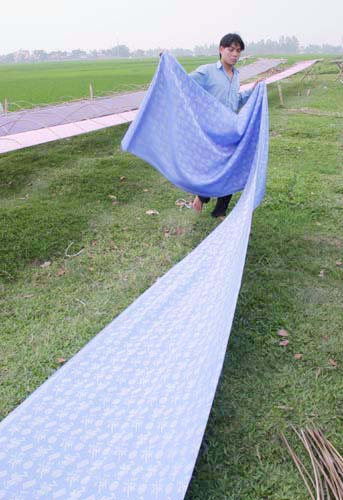
Over time, Vietnamese weavers developed their own styles. During the Ly dynasty for instance, silk weavers could produce silks with rich colours and patterns.
Vietnamese silk was a luxurious product, and in 1040s, King Ly Thai Tong decided to make court costumes with local silks instead of the imported materials used before.
Since then, silk has been produced for royal families or people of rank. The word silk in Vietnamese is lua. People sometime use it with another Vietnamese noun nhung, the name of a cloth, as in the sayings “live in nhung lua” or “was born in nhung lua” when talking about gentle people.
Vietnam’s province Ha Tay, now divided into Son Tay and Ha Dong Provinces, was known as the biggest and oldest silk production centre in Vietnam, where the villages La Khe, La Noi, La Ca, La Tinh, La Phu, Ba La, Dai Mo, Tay Mo, Thuong Mo and Van Phuc wove their textile magic (La is the Chinese word for silk).
Among them, the most popular and biggest village was Van Phuc, which has become renowned in Vietnam. Van Phuc silk was exhibited in Macxay in 1928, Paris 1931 and 1938, and Giacavta in 1931 and 1941. A museum in Ha Dong shows silk and looms and styles throughout the history of Van Phuc village.
From old looms, Van Phuc weavers created beautiful styles of silk as brick-wall, diagonal, doan, linh, dui, van, bang, que, gam and luot with many kinds of vignettes.
The most famous Van Phuc product is lua van, van means cloud in Chinese, since lua van billows like a cloud. The village artisans drew the idea to make lua van from flowers and the clouds the jet over bamboo thickets in the summer sky. Producing lua van is a demonstration of the skill of a silk weaver.
The Queen of the silks, gam, is embroidered silk, and while it may look similar to lua van it is much thicker. In the past, gam was produced to dress the king. Its production demands a very high level of sophistication.
Gam often bears the image of two dragons attending the moon, but each piece is different and unique. Silk is woven from side to side, so gam is started from one dragon’s tail, running to its head, across the moon, and from head to tail of the other dragon. If the dragons turned out asymmetrical, the piece would be destroyed, and another produced.
Each piece takes almost a year to design and three months to weave. Its very production demands memory and a great level of experience. In feudal times, things were rough for even the most honoured of silk producers. When a gam was produced, its sample had to be destroyed to confirm that the piece was unique. Three generations of a producer’s family would be killed if a second run was made.
Van Phuc, now has 730 households with 1,600 people earning a living by weaving silk. The village stocks a wide variety of silk products, and ships goods all over Vietnam, as well as exported overseas.
Customers can buy silk suited to their wallet. Fabric made of 50% silk sells for an average of VND20,000 per meter, 75% silk for VND50,000, while 100% silk is priced depending on the quality of pattern and fabric thickness.
Statistics show that 785 of all 1,343 households in Van Phuc commune take part in the craft. Silk sales generate about VND27bil and make up 63% of the commune's economy each year.
Given that each power-loom generates one weaving job (not including supplementary jobs such as spinning, dyeing and yarn joining), the craft village can create more than 1,000 jobs each year.
Co Sat village now is Co Do village in Ba Vi, Son Tay about 40km south west Hanoi. There, a temple worships Hoang Phu Thieu Hoa as the grandmother of Vietnamese silk.
Ha Dong and Son Tay provinces have 88 trade villages, and provincial leaders are planning to open another 32 such villages, most of them will be named La. The number will expanded to 200 in 2005, all producing silk.
(Source: Vnn)



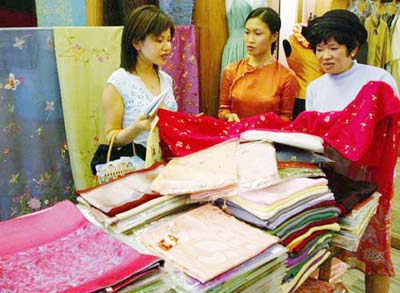





.png)
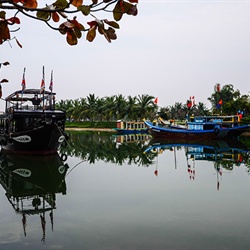


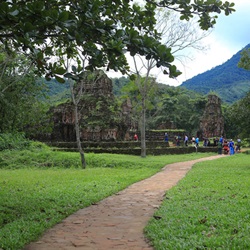
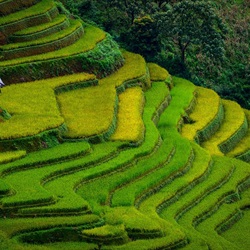
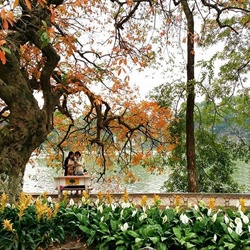
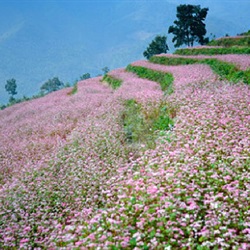

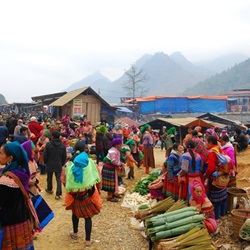

COMMENTS